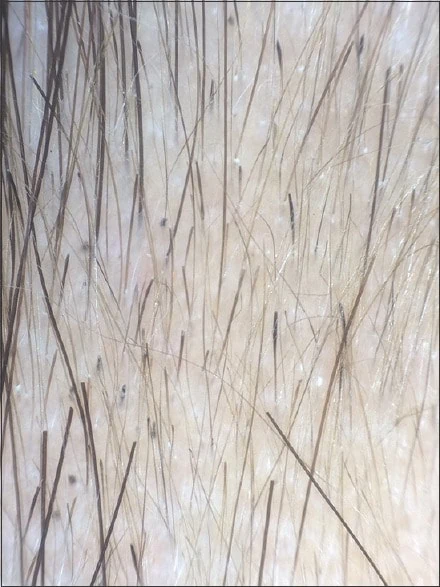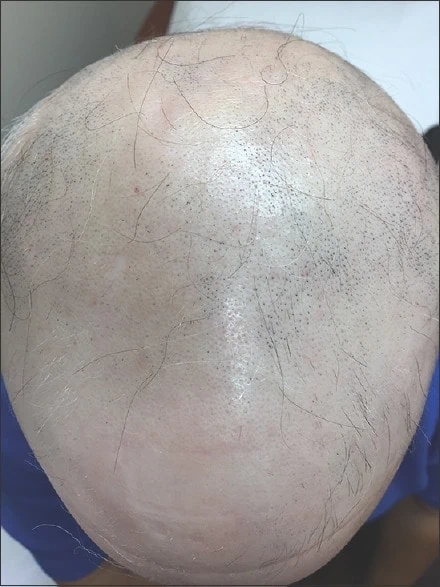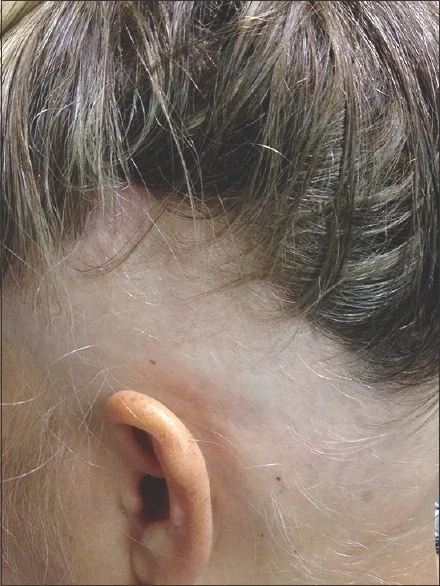Hair loss is an emotionally distressing condition that can have a significant effect impact on your quality of life. Alopecia affects approximately 2% of the Canadian population. While alopecia is not life-threatening or painful, the psychological impact cannot be overestimated. There are not many therapies that treat hair loss, stimulate hair growth, and strengthen hair follicles, therefore you can be left feeling like you are out of options.
Have you wondered if there are any natural treatment solutions for alopecia? If so, you are in the right place! In this blog post, we will discuss what causes alopecia, various types of alopecia, as well as some natural treatment options, with a focus on specific treatments that promote hair regrowth and prevent the progression of hair loss.
Let’s dive in.
What Is Alopecia?
The term alopecia refers to hair loss, regardless of the cause. It is not exclusive to the scalp and can be anywhere in the body. Alopecia can be subdivided into two main categories: scarring and non-scarring (1).
The most common type is non-scarring or androgenetic alopecia (1). Androgenetic alopecia has a strong family history and most commonly occurs in Caucasian males. It presents with thinning of the temporal and frontal areas, as well as the vertex scalp, or complete hair loss with residual hair at the occiput and temporal regions.
The majority of men start to lose hair in their twenties, while women begin to lose their hair in their forties or fifties (1). The pathophysiology is dependent on the type of alopecia. In androgenetic alopecia, both genetic and hormonal androgens play a role in pathogenesis (1). In telogen effluvium, nonscarring, noninflammatory alopecia where large numbers of hairs fall out 3-5 months after a physiologic or emotional stressor, the shedding of hair is under the influence of hormone or stress, but sometimes the trigger is unclear (1).
 What Are The Symptoms Of Alopecia?
What Are The Symptoms Of Alopecia?
Symptoms of alopecia will depend on what type of alopecia you exhibit. Some of the common significant features include:
- Small bald patches on your scalp or other parts of your body
- Clumps of hair coming out in the shower or on a hairbrush
- Short, vellus hairs, yellow or black dots, and broken hair shafts
- Bitemporal thinning of the frontal and vertex scalp
- Hair breaking secondary to trauma or because of fragile hair
What Causes Alopecia?
The cause of hair loss is unknown in the majority of cases. Often hair loss is attributed to stress or androgen-related causes. Certain conditions can lead to hair loss which is important to know. These include:
- Both thyroid excess and deficiency
- Atopic dermatitis
- Lupus erythematosus
- Vitiligo
- Psoriasis
- Rheumatoid arthritis
- Inflammatory bowel disease
- Depression
- Anxiety
- Pituitary malignancy
- Polycystic Ovarian Syndrome (PCOS)
There are also classes of drugs that can be associated with hair loss. These include:
- Anti-hypertensives
- Antiarrhythmics
- Statins
- Antimetabolites
- Psychotropic agents
- Anti-convulsants
- Anti-coagulants
- Anti-retrovirals
- H2 blockers
After cessation of the medication, hair growth appears to return to baseline.
Concerning vitamins, Vitamin A and Vitamin E deficiency have no known link to hair loss. Vitamin A excess, on the other hand, can lead to hair loss. While this is often due to excessive supplementation, certain illnesses such as chronic kidney disease can make you more prone to a high serum Vitamin A level. In general, the recommended maximum daily intake of Vitamin A is 10,000 IU.
Zinc deficiency can lead to numerous dermatological conditions, including brittle hair and periorbital dermatitis. Those who are most at risk of zinc deficiency include those who have gastrointestinal disorders such as ulcerative colitis, Crohn’s disease, and chronic liver disease, pregnant and lactating women, vegetarians, older infants who are exclusively breastfed, alcoholics and those will sickle cell disease.
Selenium has also been linked to hair loss when taken in excess. This has been seen in case reports of individuals using selenium sulphide shampoo to treat seborrheic dermatitis. Individual tests can be done to explore nutritional deficiencies and excesses. There is limited research on selenium deficiency and alopecia in humans.
Iron deficiency is the world’s most common nutritional deficiency and can lead to hair loss. Iron deficiency anemia can only be assessed through running lab work. It is important to get this blood work interpreted with your health care provider.
What Is Alopecia Areata?
Alopecia areata is a complex autoimmune condition and form of alopecia that impacts hair follicles and nails (2). It typically presents with round patches and is a type of non-scarring hair loss (2). The mean age of onset appears to be between 25 and 36 years (2). An association with atopic dermatitis exists in approximately 39% of cases (2).
Both genetic and environmental factors appear to play a role in the causation of alopecia areata. Observational studies have demonstrated a high correlation between alopecia areata and family history (3). Environmental factors can exacerbate or induce alopecia areata, such as stress, infections, vaccinations, hormone fluctuations and diet (3).
Researchers are still trying to understand the magnitude of impact each of these factors has on alopecia areata. Multiple, and not just one, environmental factors likely impact the disease course.
There is a high rate of spontaneous remission with alopecia areata, therefore leaving it untreated is a legitimate option for many patients (2). Conventionally, intralesional and topical corticosteroids are most commonly used to treat alopecia areata (2).
What Are The Symptoms Of Alopecia Areata?
Symptoms of alopecia areata include (3):
- Exclamation-mark hairs
- Smooth, sharply demarcated, round patches of hair loss without atrophy
- Alopecia totalis (total scalp hair loss)
- Alopecia in an ophiasis pattern (band-like hair loss on the temporal and occipital scalp)
- Nail abnormalities can be seen as well, with an incidence estimated between 7% and 66%
What is Tinea Capitis?
Tinea capitis is a fungal infection of the hair shaft and hair follicles that primarily affects children and can lead to hair loss (4). It can also affect adults, primarily those who are immunocompromised. Risk factors include low socioeconomic status, warm humid environments, animal contact, household crowding, and contact sports (4).
Patients with tinea capitis typically present with patchy hair loss, although the entire scalp may be involved (4). Both topical and internal treatments are required to treat tinea capitis. If you test positive, all members of the household should be screened for tinea capitis and treated simultaneously if found to be affected.
Natural Treatment For Alopecia
When it comes to natural treatment for alopecia, more evidence from randomized double-blind placebo-controlled trials is needed. Currently, caffeine, melatonin, and Vitamin D are topical therapies that have the most evidence to slow the progression of hair loss, promote hair growth, and contribute to overall hair health. It may be surprising for you to know biotin isn’t the top natural treatment for alopecia. Let’s find out why!
Caffeine
Caffeine has a high potential to be beneficial in subjects suffering from hair loss that originates from premature termination of the hair growth phase (5). A caffeine-containing shampoo (10 mg/mL caffeine) was assessed in females with telogen effluvium (6). After 6 months of daily application on the scalp with 2 min contact time, a decrease in hair loss was noted in more than half of the participants (6).
In addition, a good cosmetic efficacy was reported including an improvement in the strength of the hair, a decrease in the extent of hairs falling out, and a decrease in the progression of balding (6). Naturopathic Doctors can work with a compounding pharmacy to create a custom-formulated topical product specific to you.
Melatonin
Melatonin is a naturally occurring hormone that is produced in response to darkness. It has been shown to have a positive effect on androgenetic alopecia (7). The mechanism of action is not well understood, however, may involve an increase in the growth phase in hair follicles and can also increase hair density (8).
It is well tolerated and has shown no significant influence on endogenous serum melatonin levels (7). Melatonin 0.05-0.1% can be added to a custom topical formulation through a compounding pharmacy to promote hair growth.
Vitamin D
Most studies show an inverse relationship between serum Vitamin D levels and various types of alopecia, such as telogen effluvium, androgenetic alopecia, and alopecia areata. In a mouse study where the Vitamin D receptors were knocked out, hair loss developed by 3 months after birth and gradually led to nearly total hair loss by 8 months (9).
A systematic review and meta-analysis elucidated the association between Vitamin D levels and alopecia areata (10). Researchers found that individuals with alopecia areata have a higher prevalence of Vitamin D deficiency and Vitamin D levels than the control group (10). This of course only implies correlation and not causation.
A lot of the studies using topical Vitamin D as a treatment for alopecia have a limited sample size and are inconsistent between studies. However, preliminary results suggest a potential therapeutic benefit for topical vitamin D to help regrow hair follicles, with minor side effects (11).
Biotin
Despite the upsurge in using biotin to promote hair growth, there is very little evidence to support its use to treat hair loss. There have been no randomized controlled trials to evaluate the effect of biotin supplementation on alopecia.
Current guidelines only recommend biotin for hair loss in cases secondary to biotin deficiency (for example, when taking medications that deplete biotin). If you are consuming a well-balanced diet, you are likely getting enough biotin intake through food.
Amino Acids
Protein, in the form of keratin, is the primary component of hair. Amino acids are the building blocks that make up the protein structure. Suboptimal intake of the essential amino acid, l-lysine, may be associated with increased and persistent hair shedding and reduced hair volume.
Examples of l-lysine foods include high protein foods such as meat (specifically red meat, pork, and poultry), cheese, certain fish such as cod and sardines, and eggs. Specific cultural diets may be deficient in l-lysine, therefore it is important to assess overall amino acid nutritional deficiencies based on various diets to appropriately treat hair loss.
Others
Supplementation of zinc, folic acid, and other minerals and vitamins will be beneficial as a natural treatment for alopecia and hair growth if deficiency is present.
If you are unsure of where to begin for optimal hair health, contact one of our practitioners today.
Frequently Asked Questions
What Is The Difference Between Hair Loss And Hair Shedding?
The main difference between hair loss and hair shedding is that hair loss occurs mainly due to external factors, whereas hair shedding is a normal function that happens to all of us. Hair shedding is a common consequence of the normal hair cycle that changes with internal and external factors. It’s normal to shed between 50 and 100 hairs a day (12).
When the body sheds significantly more hair every day, a person has excessive hair shedding. The medical term for this condition is telogen effluvium (12). Most people notice the excessive hair shedding a few months after the stressful event. However, once the external stressor is over, hair regrowth will occur. Some examples of stressful events include (12):
- Fast weight loss
- Giving birth
- Caring for a loved one who is sick, going through a divorce, losing a job
- Undergoing a stressful operation
- Recovering from an illness, especially if it included a high fever
With hair loss, on the other hand, your hair will not grow until the cause stops. Often the causes can be hereditary, related to treatment like chemotherapy and radiation, harsh hair products, immune system overactivation, and other drugs and therapies.
How Do I Stop My Hair Loss?
If hair loss occurs secondary to a medical condition, treatment, or medication, it will be difficult to stop until the condition is addressed and/or treatment is stopped. Working with your practitioner to evaluate the root cause of your hair loss is very important. Laboratory assessment can help narrow the diagnosis. Our Naturopathic Doctors at Annex will run blood work to assess for any deficiencies or medical conditions.
The list could include testing such as Vitamin D, complete blood count, iron panel, thyroid function tests, autoantibodies, total and free testosterone, ovarian hormones, luteinizing hormone, and follicular stimulating hormone. If tinea capitis is suspected, then a fungal culture is needed. Treatment will vary, depending on the cause of your hair loss.
How Much Hair Loss A Day Is Normal?
Shedding up to 50-100 hairs a day is considered normal and does not negatively impact your hair health.
What About Hair Loss During Menopause?
The onset of hair loss during and after the menopause transition can be caused by a variety of conditions. Female pattern hair loss is one common cause. In female pattern hair loss, the hair’s growing phase shortens and fewer hairs are in the active growth phase. The hair thins mainly on the crown of the scalp, and hair loss rarely regresses to total or near total baldness.
The pathophysiology is not completely understood, but there is evidence to suggest that both genetic and environmental factors play a role. Estrogen receptors have been found on hair follicles, however, the exact mechanism of action of estrogen on hair follicles is unknown. Estrogen therapy can support hair growth as it supports other skin structures.
However, it is not consistently effective for hair loss problems. The goal of all treatment options for female pattern hair loss is to prevent the progression of hair loss. Nutritional deficiencies should be corrected, and topical therapies should be discussed with your health care practitioner.
References
- Al Aboud AM, Zito PM. Alopecia. [Updated 2022 Apr 30]. In: StatPearls [Internet]. Treasure Island (FL): StatPearls Publishing; 2022 Jan-. Available from: https://www.ncbi.nlm.nih.gov/books/NBK538178/
- Lepe K, Zito PM. Alopecia Areata. [Updated 2021 Nov 15]. In: StatPearls [Internet]. Treasure Island (FL): StatPearls Publishing; 2022 Jan-. Available from: https://www.ncbi.nlm.nih.gov/books/NBK537000/
- Darwin E, Hirt PA, Fertig R, Doliner B, Delcanto G, Jimenez JJ. Alopecia Areata: Review of Epidemiology, Clinical Features, Pathogenesis, and New Treatment Options. Int J Trichology. 2018 Mar-Apr;10(2):51-60. DOI: 10.4103/ijt.ijt_99_17. PMID: 29769777; PMCID: PMC5939003.
- Phillips TG, Slomiany WP, Allison R. Hair Loss: Common Causes and Treatment. Am Fam Physician. 2017 Sep 15;96(6):371-378. PMID: 28925637.
- Völker JM, Koch N, Becker M, Klenk A. Caffeine and Its Pharmacological Benefits in the Management of Androgenetic Alopecia: A Review. Skin Pharmacol Physiol. 2020;33(3):93-109. doi: 10.1159/000508228. Epub 2020 Jun 29. PMID: 32599587.
- Sisto T, Bussoletti C, Celleno L. Role of a caffeine shampoo in cosmetic management of telogen effluvium. J Appl Cosmetol. 2013;31: 139–45.
- Fischer TW, Trüeb RM, Hänggi G, Innocenti M, Elsner P. Topical melatonin for the treatment of androgenetic alopecia. Int J Trichology. 2012 Oct;4(4):236-45. DOI: 10.4103/0974-7753.111199. PMID: 23766606; PMCID: PMC3681103.
- Fischer TW, Burmeister G, Schmidt HW, Elsner P. Melatonin increases anagen hair rate in women with androgenetic alopecia or diffuse alopecia: results of a pilot randomized controlled trial. Br J Dermatol. 2004 Feb;150(2):341-5. DOI: 10.1111/j.1365-2133.2004.05685.x. PMID: 14996107.
- Xie Z, Komuves L, Yu Q-C, Elalieh H, Ng DC, Leary C, et al. Lack of the vitamin D receptor is associated with reduced epidermal differentiation and hair follicle growth. J Invest Dermatol. 2002;118:11–16.
- Tsai T-Y, Huang Y-C. Vitamin D deficiency in patients with alopecia areata: a systematic review and meta-analysis. J Am Acad Dermatol. 2018;78:207–209.
- Hosking AM, Juhasz M, Atanaskova Mesinkovska N. Complementary and Alternative Treatments for Alopecia: A Comprehensive Review. Skin Appendage Disord. 2019 Feb;5(2):72-89. DOI: 10.1159/000492035. Epub 2018 Aug 21. PMID: 30815439; PMCID: PMC6388561.
- American Academy of Dermatology Association. (n.d.) Do you have hair loss or hair shedding? Retrieved July 5, 2022. https://www.aad.org/public/diseases/hair-loss/insider/shedding
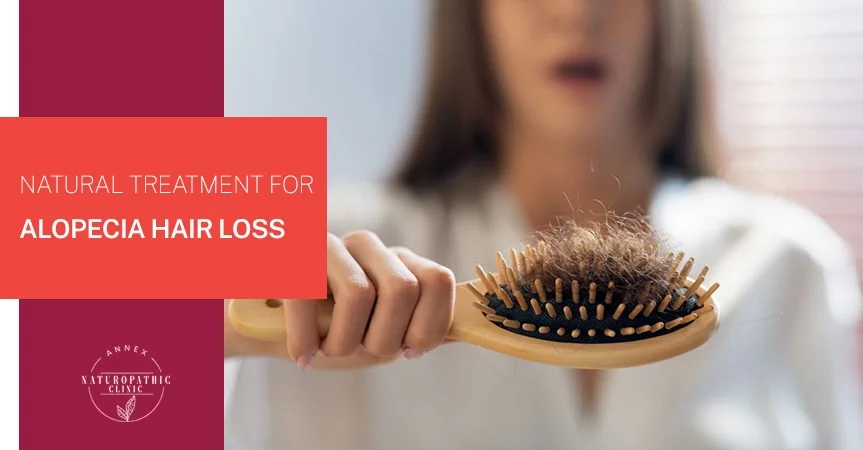
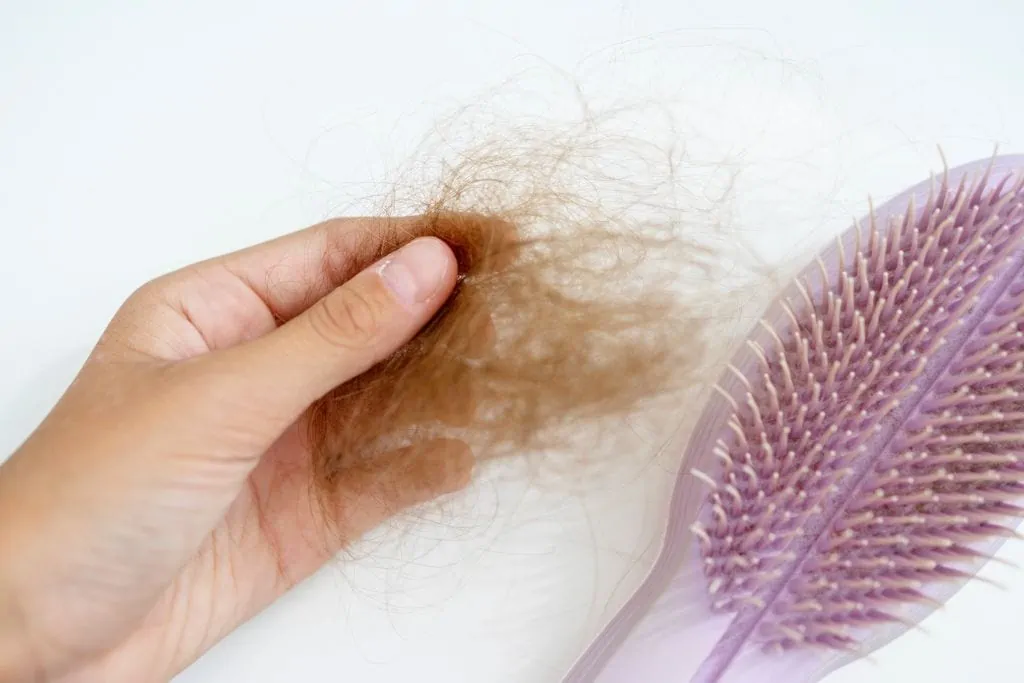 What Are The Symptoms Of Alopecia?
What Are The Symptoms Of Alopecia?
